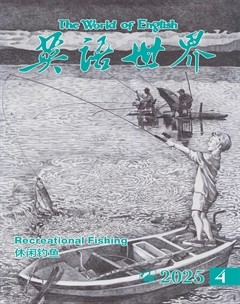Catching fish as small as a penny would be nothing short of embarrassing for the average fisherman, but in Japan it’s a source of pride, as in the old art of Tanago Fishing, the smaller the fish is, the bigger a catch it represents.
对寻常钓鱼人来说,钓到一分钱硬币那么小的鱼堪称丢脸,但在日本,这却是一份骄傲,因为“小物钓”这项古老的艺术正讲究鱼获越小,钓技越高。
Most fishermen believe that the bigger the fish they catch, the greater their fishing skill is, which is why you routinely see them posing only with very large fish, and hear them telling tales about veritable1 sea monsters that only narrowly eluded2 them. However, things are very different in Japan, a country where minimalism is pervasive in all aspects of life, from gardening, to architecture. Fishing makes no exception, so it’s not very surprising that fishermen judge their skills not by how large their catch is, but by how small it is.
大多数钓鱼人相信,钓到的鱼越大,越能彰显实力,所以你往往看见他们只和大鱼合影,也常听他们谈起那些在千钧一发时失之交臂的、真正的海中巨怪。但在日本的情况完全不同,从园艺到建筑,极简风格在各方面都很普遍,钓鱼也不例外,所以钓鱼人评判各自本事的标准,不是看钓到的鱼有多大,而是看鱼有多小,也就不奇怪了。
Tanago fishing is an ancient Japanese fishing method dating back to samurai over 200 years ago. Tanago is a Japanese term used to describe several species of a small freshwater fish we know as “bitterling”. Some species of tanago grow up to 15cm in size, but these are the less valuable to fishermen, as the goal is to catch the smallest fish possible. Tanago anglers believe that the smaller the fish caught, the greater the testament to the skill of the angler.
小物钓可溯源至武士时代,是一种已有200多年历史的古老日式钓法。





